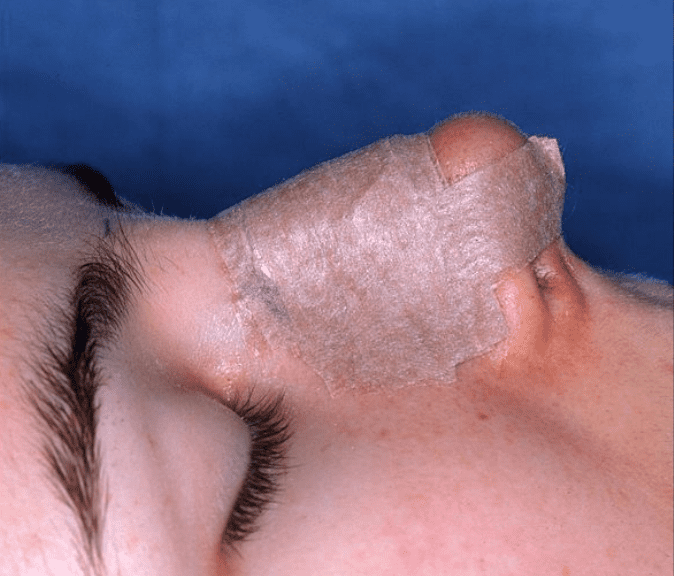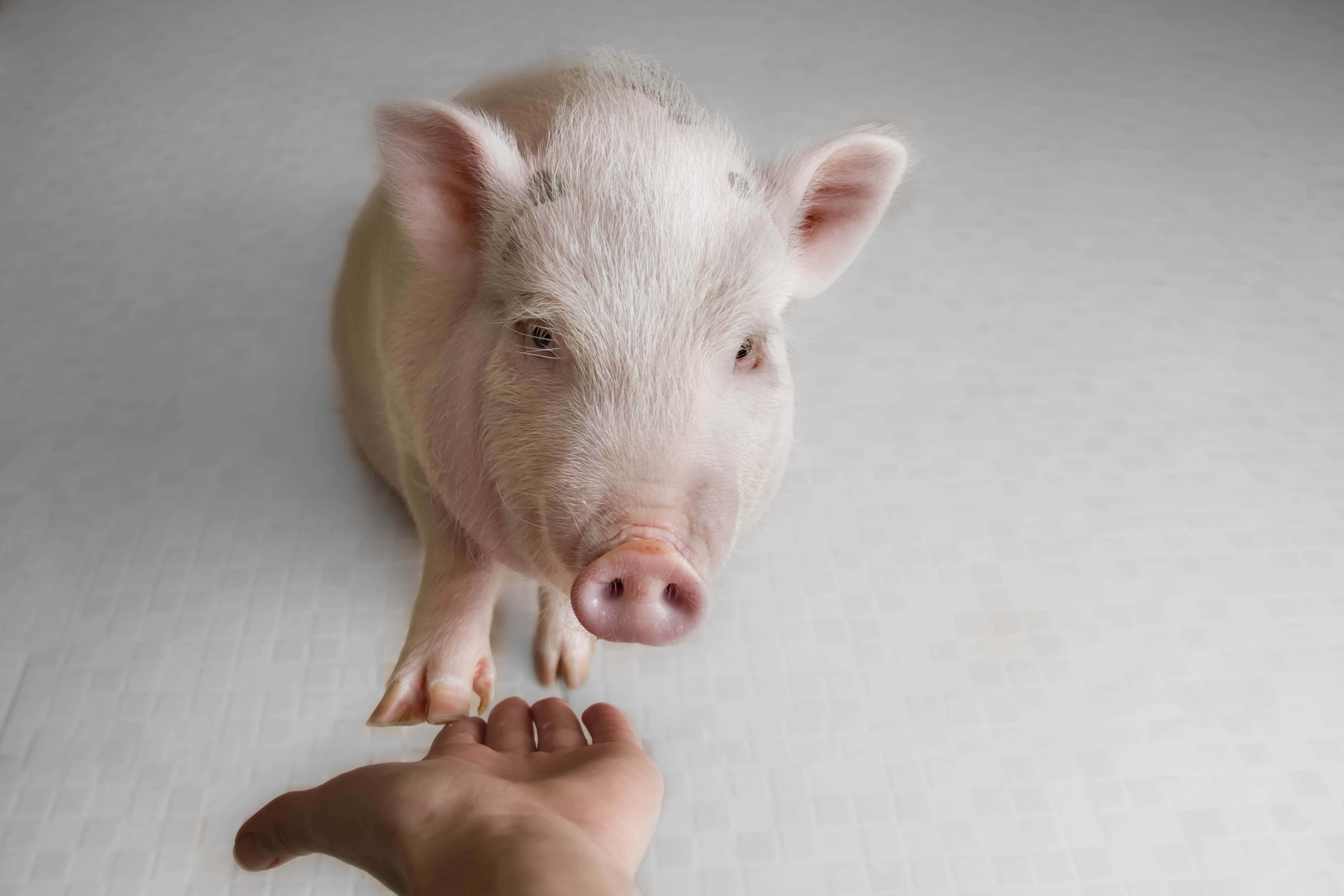Plastic Surgery has come to be omnipresent in contemporary society, but the idea of changing the way humans look isn't exactly a new idea—people have been experimenting with their bodies throughout history. Here are 47 interesting facts about how plastic surgery came to be—and some of the extreme lengths people have taken it to.
47. For The Love of Hamburgers
Former Libyan dictator Muammar Gaddafi cared about his presentation so much that he underwent plastic surgery throughout his life. In 1995, he was worried that the people of Libya were beginning to see him as an old man, so he had a procedure done to remove fat from his stomach and have it injected into his face. During the surgery, he refused to be completely anesthetized, and had the surgeons pause partway through so that he could eat a hamburger.

46. Follow The Brows
For those who want their eyebrows to be a bit thicker, they can now go to New York to get what is being called the “Cara Package,” and have an eyebrow transplant that's molded to look like, you guessed it, actress Cara Delevingne's famous brows.
45. Men and Women
Women make up over 90% of all plastic surgeries in the United States, with men rounding to about 9%. This is a sharp increased over the past two decades, however, as men have optioned to have plastic surgery 45% more frequently than they did at the start of the century.
44. Chest Insecurity
Men now account for 40% of all chest reduction surgeries in the United States.
43. Sick of Shaving
Part of the rise in men getting plastic surgery has to do with the trendiness of beards. Many men who cannot grow full beards have opted to have “facial hair implants” in order to join in on the trend of having a full beard in daily life. I can only assume it's largely so they can join the masses of bearded men who complain about how itchy they are.
42. Etymological Origins
Plastic surgery didn’t get it's name because people who have gotten it look like they're made from plastic (I guess that's a coincidence). The term is derived from Greek word plastikos, which means to mold or give form to something.
41. Even Before Plastic
The first use of the term plastic surgery was in the year 1837, a full 18 years before plastic was invented.
40. First Uses
Initially, plastic surgery was used mainly as a way to reconstruct damaged body parts, rather than as a form of molding one’s cosmetic appearance.
39. Not Who You'd Expect
Of all the celebrities in Hollywood who have had plastic surgery, would you guess that Steve Buscemi was one of them? While filming a movie with Vince Vaughn in 2001, the two men got into a bar fight and Buscemi ended up getting hurt in the face and neck. He was left with some scars from the event, but they have largely been concealed thanks to plastic surgery.

Sign up to our newsletter.
History’s most fascinating stories and darkest secrets, delivered to your inbox daily. Making distraction rewarding since 2017.
38. Modern Approaches
Modern plastic surgery truly began in the 19th century, but its origins lay in part with the 16th-century physician Gaspare Tagliacozzi. Tagliacozzi used skin from the inside of a patient's arm to successfully reconstruct their disfigured nose. The only catch? The skin from the arm needed to stay attached to the arm and the nose for several weeks, so an apparatus was built to keep the patient's arm raised in front of their face. Comfy!
37. Sword Fights
Tagliacozzi was a Renaissance doctor, but he wasn’t the only one doing nose jobs. There was considerable interest in rhinoplasty due to the trend of people dueling with rapiers during the 16th century. These thin, sharp swords quickly disposed of many noses during the Renaissance.
36. Founding Texts
Although Tagliacozzi gets a lot of credit, he didn’t actually invent this method of nasal reconstruction out of thin air. Instead, he referred to an ancient Sanskrit text called the Sushruta Samhita, which is also a foundational text of Ayurvedic medicine.
35. Barber Surgeons
Plastic surgery during the Renaissance sounds fun, doesn’t it? Well, to top it all off, most procedures took place at a barbershop, as barbers were the most precise blade men of their time. Gimme a fade and a facelift!
34. Elf Ears
Ever dreamed of being Legolas for a day? How about for a lifetime?! Well, lucky for you, there's a plastic surgery procedure called “Elfing” in which the surgeon will give you the ears of an elf by simply cutting of a chunk of your ear cartilage off at the top, then connecting the remaining parts of the lobe in the shape of a point. Then you're ready to hunt some orcs!
33. The Snorkel is Key
The ancient Sanskrit text we spoke of earlier is the earliest known record of a rhinoplasty, or what we like to call a “nose job” now. These Hindu surgeons would take skin from either the cheek or forehead, stretch it out over a leaf of desired size, then sew it over the nose. Of course, breathing may be a problem, but not to worry, these ancient surgeons had a plan for everything! They'd polish up a couple of wooden tubes and place them into the nostrils during the healing process. Useful and stylish!
32. Masochistic Romans
Male chest reduction goes all the way back to the Romans, because... well, because of course it does. Records left over from the Roman physician Cornelius Celsus also reveal that around the turn of the millennium it was relatively popular to have work done on your eyes, lips and nose. Another procedure involved men getting circumcision reversed. Why anyone would want a surgeon to go back down there is beyond me, but I'm not an Ancient Roman.
31. Poker Face
Ever wonder how Botox, that staple of reality TV, works? Well, it actually paralyzes your facial muscles in order to give the appearance of youthfully smooth skin. But there's also something called “Pokertox” which gives poker players a stiff face for competitive tournaments. Well, I guess if you're good enough you can at least pay for it, and as a plus, no one will be able to tell how sad you are if you lose!
30. Indian Inspiration
Plastic surgery reentered into the European mind after British surgeons returned to the continent inspired from seeing an Indian bricklayer perform an incredible surgery. They watched as the man repaired the nose of another man who had it cut off on the order of the sultan. He also had his hand cut off, but unfortunately, that's a bit harder to repair.
29. Preparing the Ended
Back in Ancient Egypt, the afterlife was a big deal. So big, in fact, that they actually performed plastic surgery procedures on the passed bodies in order to make them more attractive for their eternal life. Believing that the face a person is buried with will be their face for all eternity, they would mold it to its most attractive form before laying them to rest. I'm sure it's a whole lot easier to perform plastic surgery when you don't need to keep the dang person alive.
28. Battle Time Trends
Battle has always been fashionable, yet plastic surgery was not for a long period of time. During the Middle Ages, it was considered a sin for a surgeon to open up the body of another human, as the human body was thought to be God’s perfect creation. As previously stated, however,battle was always fashionable, and it took the realization that surgery could fix a person’s wounds for experimentations in surgery to resurface.
27. Social Media Effects
Social media is a tool which can be wielded for many purposes and there are many consequences of its role in modern lives. One such consequence is an increase in plastic surgery, as many people are going under the blade, whether it's to become more attractive or to emulate a certain look. In studies, many people have explicitly admitted to getting plastic surgery just to look better in selfies.
26. Relationship With Mental Illness
Social media is certainly not helping the 2% of the population suffering from body dysmorphic disorder (BDD). This disorder can take over a person's life as they obsess over a perceived flaw in their bodies that is in reality very minor or, in some cases, not even real. It's estimated that up to 15% of people who suffer from BDD seek out plastic surgery, though they are often denied by proper surgeons who can recognize that they should first seek out help from a mental health professional before altering their physical appearance.
25. Western Influence
It has been quite common for years for Asian women to alter their appearance to look more Western. The most popular procedure to achieve this is double-eyelid surgery, in which women have the corners of their eyes rounded and a crease created in their eyelids in order to give the appearance of wider, rounder eyes.
24. Back to the Roots
In recent years, the trend of creating Western features in Asian people has been petering out, and people are now beginning to have surgery to accentuate their ethnic traits in an effort to preserve their ethnicity in an ever-globalizing world.
23. Spoiled Silicone
The 1960s saw the rise of chest implants and their presence in popular culture, but they weren't particularly safe at first. Originally, liquid silicone would be injected directly into women's chest to augment their size, but this often resulted in tragedy, as infections were common and many women had to have their chest amputated.
22. Silicone Uses
The original use of the liquid silicone was by the Japanese during the WW1. They used it to fill out the withered legs of polio victims.
21.German Aesthetic
German army didn’t just have to be real German citizens who fit the part, they also had to look the part. In order to make some army man who didn’t meet the desired standards look like “real” Germans, they were forced to undergo plastic surgery.  Getty Images
Getty Images
20. Italian Homogeneity
Italy in time of WW2 also employed appearance standards on their army man, as Benito Mussolini put in place the practice of correcting many man from army ' facial structure, including straightening eyelids that were perceived to droop too much. I sure hope Jughead wasn't a member of the Italian Army around this time!
19. Addiction
Over five million Americans suffer from plastic surgery addiction, and about two-thirds of all patients are those who have had procedures done before.
18. Image of Beauty
Marilyn Monroe is still one of the world’s biggest stars, and many people look to her as a natural beauty from an era before society became so obsessed with physical perfection. It's a great story, but unfortunately, it's not quite the truth: Not only was Monroe naturally a brunette, but she herself had work done on her nose and chin.
17. Have Plastic Surgery, Will Travel
Many people are now engaging themselves in “lipotourism,” in which they travel to other countries in order to have cheaper plastic surgery done. Inherently, this is a risky idea, and some people have been left life-hazard infections as the medical standards in the countries they travel to are often rather lax—hence the cheaper surgeries.
16. Bigger Butts
The newest plastic surgery trend is implants in behind. This fast-growing trend is due to a simple reason: people like big butts, and they cannot lie. Also, Kim Kardashian.
15. Fatty Implants
This implants may be the hottest trend, but chest augmentation is still the queen of all plastic surgeries. The first successful chest implant took place in Heidelberg, Germany in 1893, performed by the famous surgeon Vincenz Czerny. The patient needed to have a growth removed from one of their chest , but fortunately they also had a fatty growth on their back called a "lipoma," so Czerny collected it from her back and implanted it in her chest.
14. First Lady Looks
After Donald Trump came into office as President of the United States, a mother in Texas underwent eight different plastic surgeries in order to look like Melania Trump and become, quote: “the First Lady that I know I am inside". To her credit, she says her image problems began after she was recovering from the radiation therapy she needed while fighting chest cancer. She survived the disease, but felt severely insecure. This came to a head when she was on a date, and the man she was with asked her how old she was, made her show him her driver's license, and told her she looked a lot older than she was. Were you judging her when you read the first part of this fact? Are you still? Didn't think so.
13. Cement Face
One woman thought it was a good idea to have not just her face, but her body injected with... cement. Do I need to tell you that this left her permanently disfigured?
12. National Obsession
The United States is a nation obsessed with plastic surgery, and over 14.6 million procedures are done in the country annually, accounting for around 20% of all plastic surgeries done world-wide.
 Wikimedia Commons, Travis Gergen
Wikimedia Commons, Travis Gergen
11. Doggy Trial
The first chest augmentation done with proper silicone was performed in the early 1960s by surgeon Frank Gerow on... a dog. He conceived of the idea while working as a junior resident surgeon in Houston—after squeezing a blood bag he realized, in a way that isn't creepy at all, that it felt quite similar to a woman’s chest. He tested out his idea on a dog to see if it was viable, and thankfully to dogs and humans everywhere, he removed the implants from the poor pooch shortly afterward.
10. The Beginning of an Era
The first chest implant with silicone performed on a human was done on Timmie Jean Lindsey, who volunteered for the procedure with Gerow after she originally came in on a consultation for the removal of a tattoo. To this day, she has the implants inside of her. No word on if she ever got that tattoo removed.  Vidal Balielo Jr., Pexels
Vidal Balielo Jr., Pexels
9. Instant Chest
Today, if a woman desires a temporary 24-hour chest increase, they can opt to have “InstaBreasts". This is the process of having a saline solution injected into the chest, which takes just 15-20 minutes and results in larger chest that last for the whole day before the body finally absorbs the solution and urinates it out.
8. Experimental Ways
Before silicone was settled upon, many different materials were experimented with, including sponges soaked in booze, paraffin, and even beeswax. Whoever thought that beeswax feels anything like a chest should probably have their medical license checked out.
7. Father of Plastic Surgery
WW1 brought about a new challenge for modern doctors, as they had an incredible amount of disfigured man that needed urgent care. This horrible opportunity brought about new advances in plastic surgery, and the prolific Harold Gillies emerged as the father of the field. Between the years 1917 and 1925, Gillies and his team performed over 11,000 procedures on more than 8,000 man, including revolutionary muscle and skin grafts.
6. Community Opposition
The eight years of near-constant activity in reconstructive surgeries for Gillies from 1917 and 1925 led to rapid advancement in the field, yet it wasn’t until 1931 that its practitioners were accepted by the greater medical community when the American Society of Plastic Surgeons was created.
5. Chinese Pets
Don’t go to China to get your new dog. It's known that some markets resort to plastic surgery techniques in order to make serious money. Vendors will take sick dogs, put them under the blade to make them like like popular, expensive breeds, pump them full of drug to maintain an appearance of health for a short period of time, and then sell them for a pretty penny. Tragically, these dogs often don't receive the care they need, which coupled with the shoddy surgeries being performed on them, often means they were gone soon after they're purchased.
4. Per Capita Leaders
The United States might have the most amount of people going under the blade, but there are two countries who beat them in terms of plastic surgeries per capita: South Korea and Columbia. South Korea leads the world in this regard, and cosmetic surgery is a popular high school graduation present for many young girls.
173. Plastic Surgery Gone Wrong
A Korean woman named Hang Mioku became addicted to plastic surgery in an attempt to bolster her career. After a large number of surgeries, she decided to take it upon herself and injected her face with cooking oil. That's right, cooking oil. This self-procedure left her face disfigured for life, and eventually, she went on television to ask her donations to help her undergo corrective surgery. The surgery was a success, as surgeons were able to remove 60g of oil from her face, though she was still left completely unrecognizable.
2. Pig Skin
As physicians during the Renaissance were trying out different methods of plastic surgery, finding skin donors was a vital process. The demand for skin led to some physicians trying to use the skin of pigs in their work. Needless to say, that wasn’t the best idea, and the skin would naturally dry up, shrink, and fall off. At first, the physicians were confused about this process, so they simply concluded that flesh is “sympathetic” and would be gone once the pig that it came from passed. Not quite, but hey, they were trying weren't they?
1. Not Just For Humans
All over the world, many pet owners have actually decided to have their pets go under the blade in order to give them new testicles—known as “neuticles". The creator of Neuticles, Gregg Miller, came up with the idea of manufacturing prosthetic testicles for neutered animals after he felt that his recently gelded dog was suffering from a sort of depression, and the first successful implant of neuticles was in 1995. Ten years later he won the satirical Ig Nobel Prize in Medicine for his invention.






















































